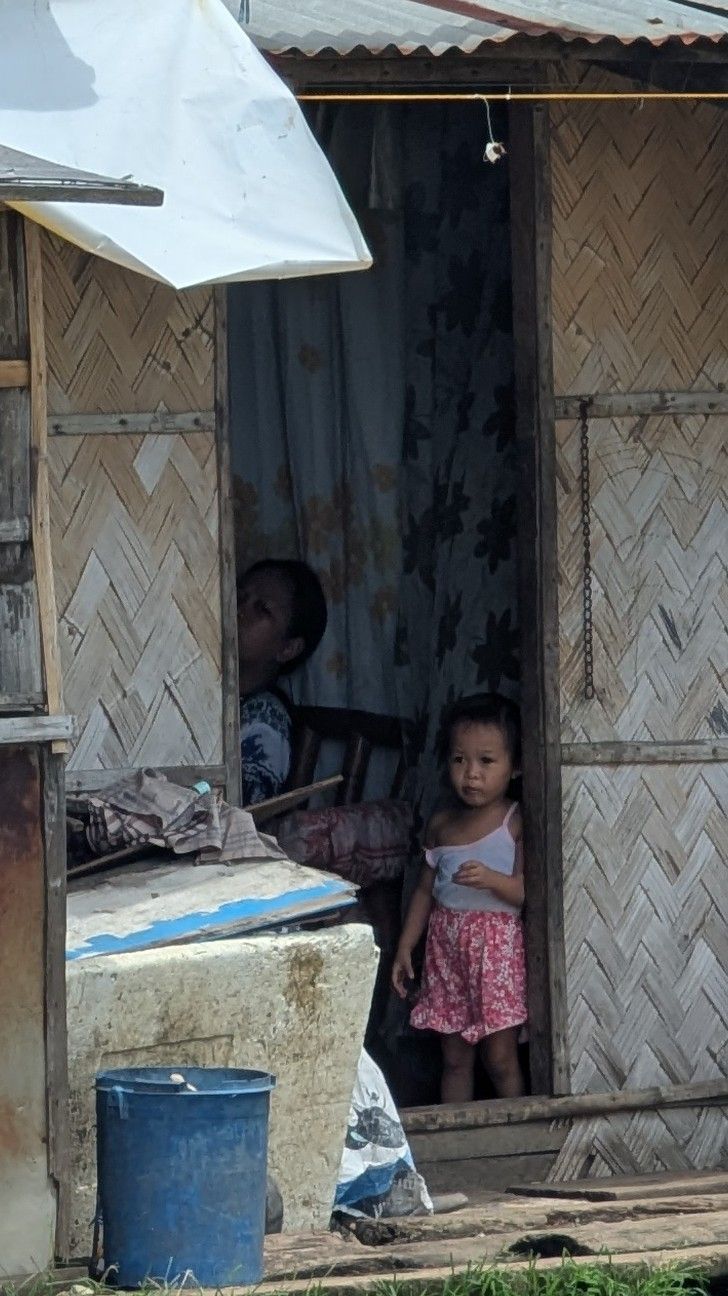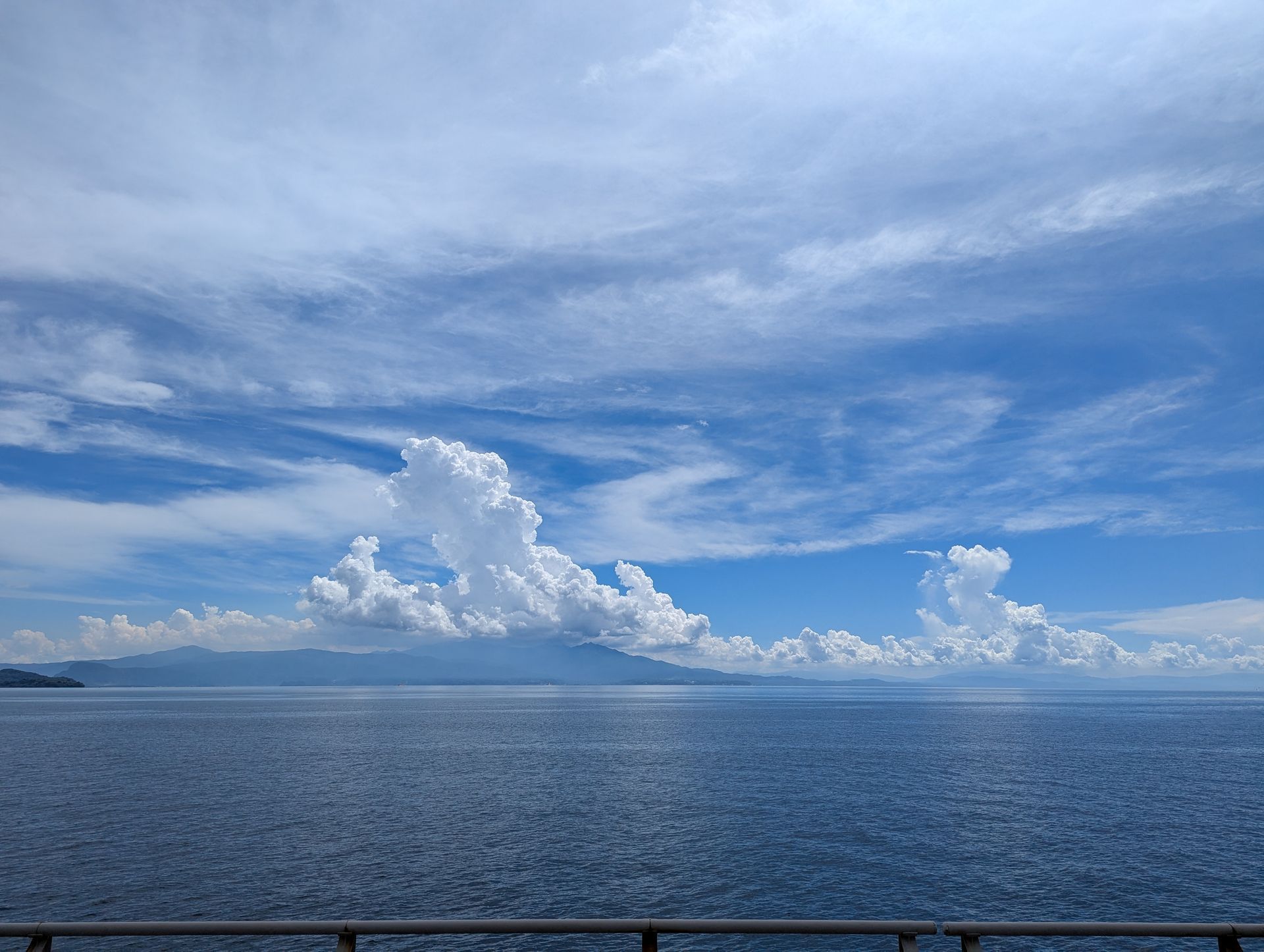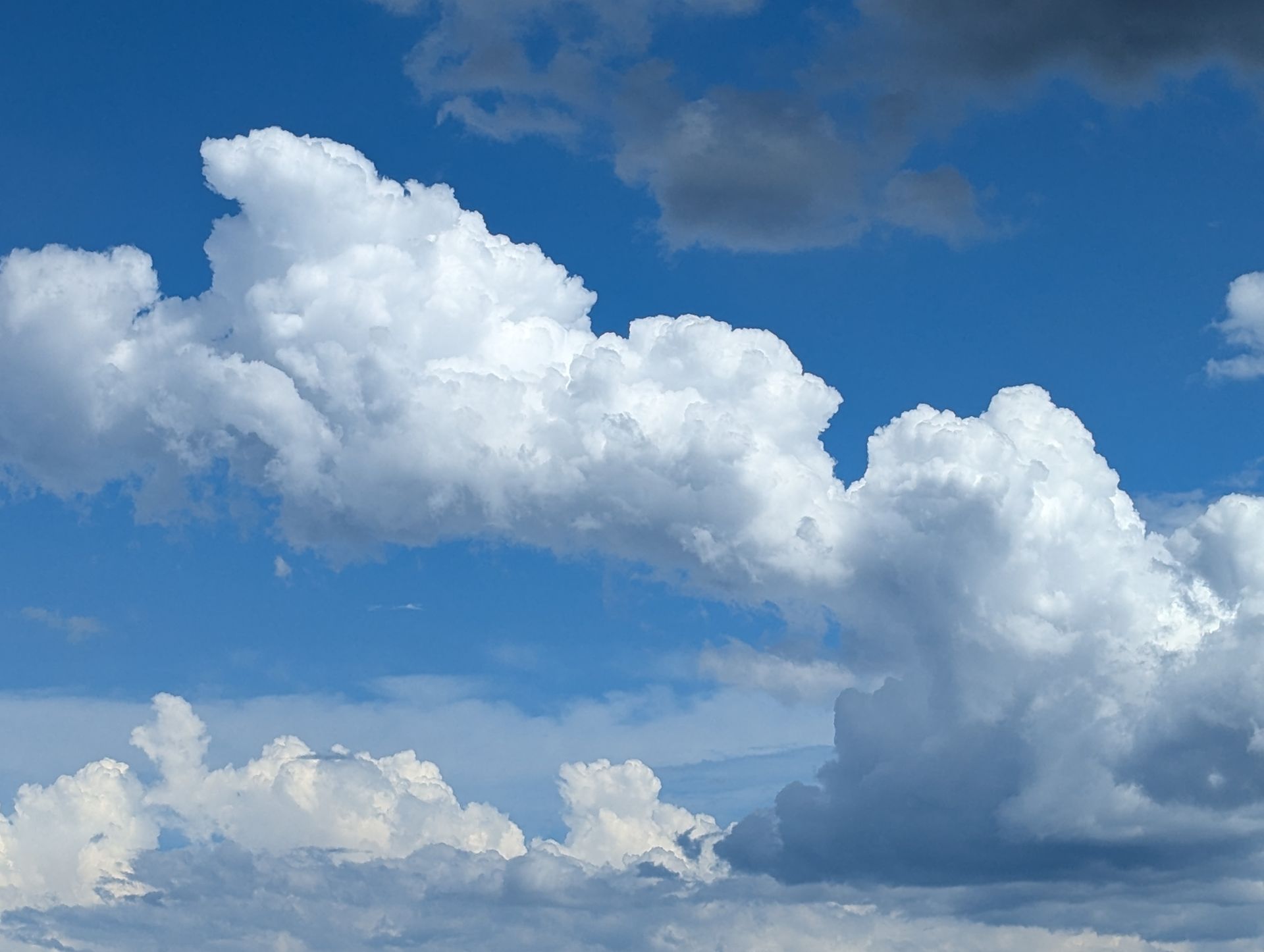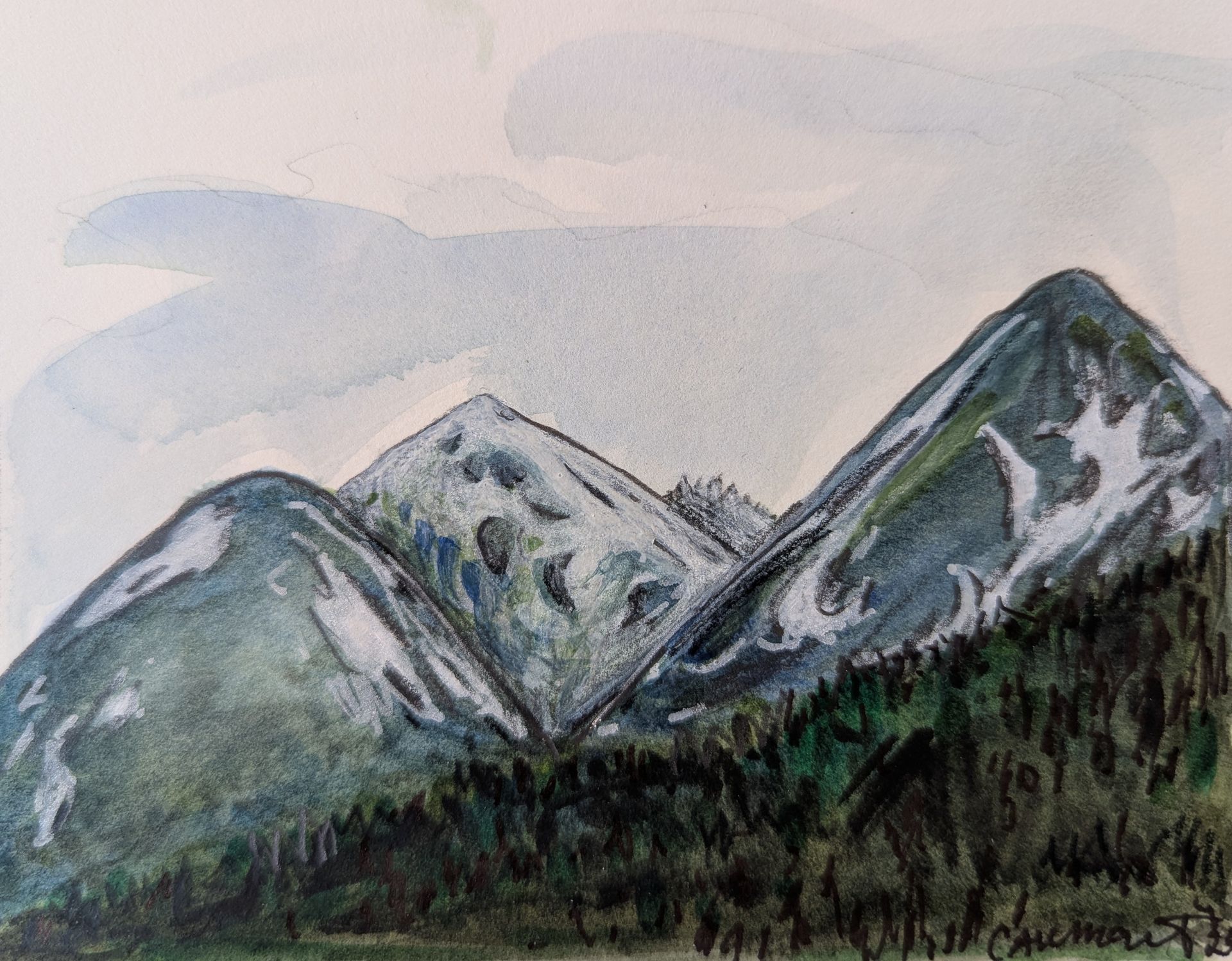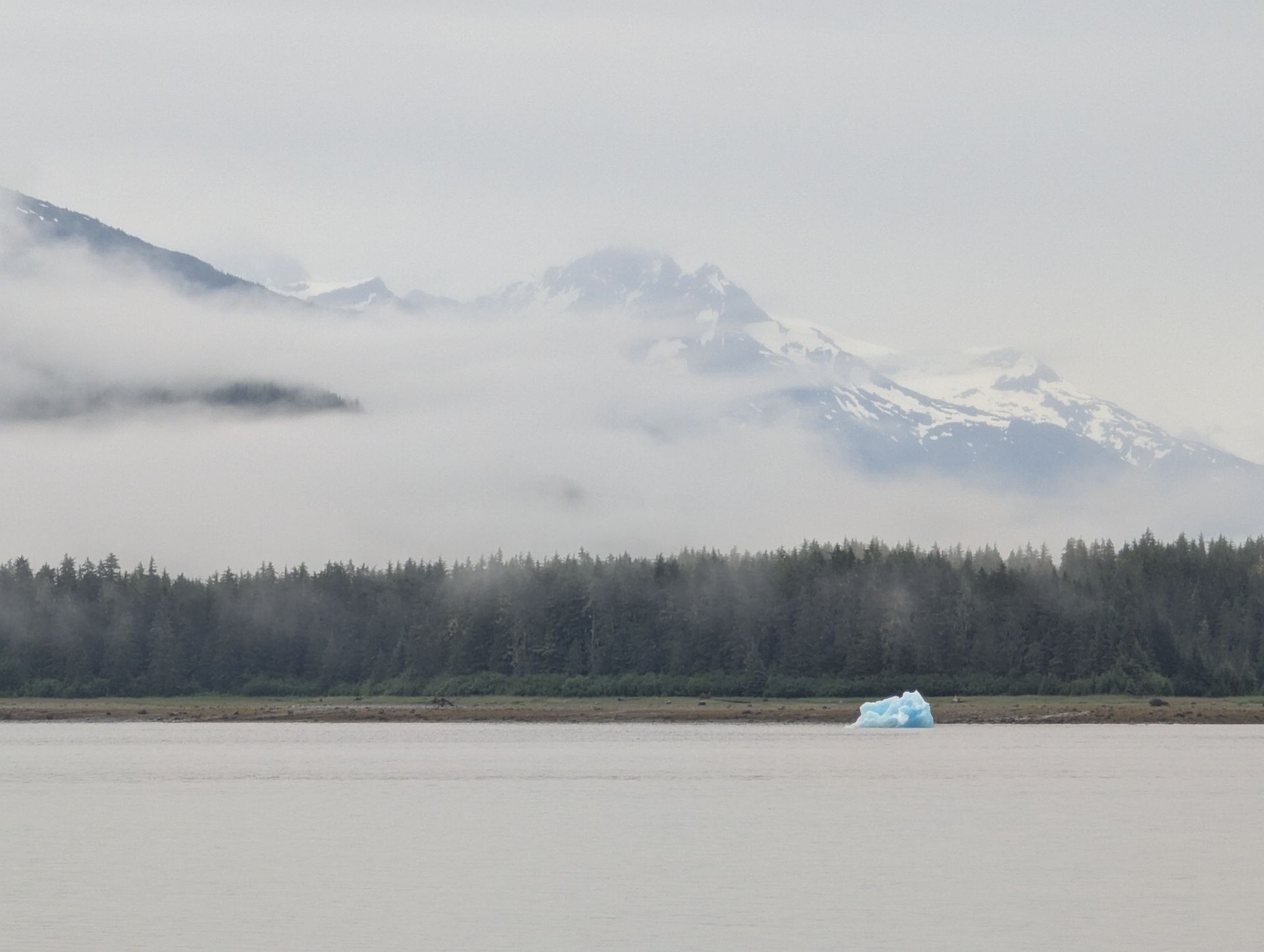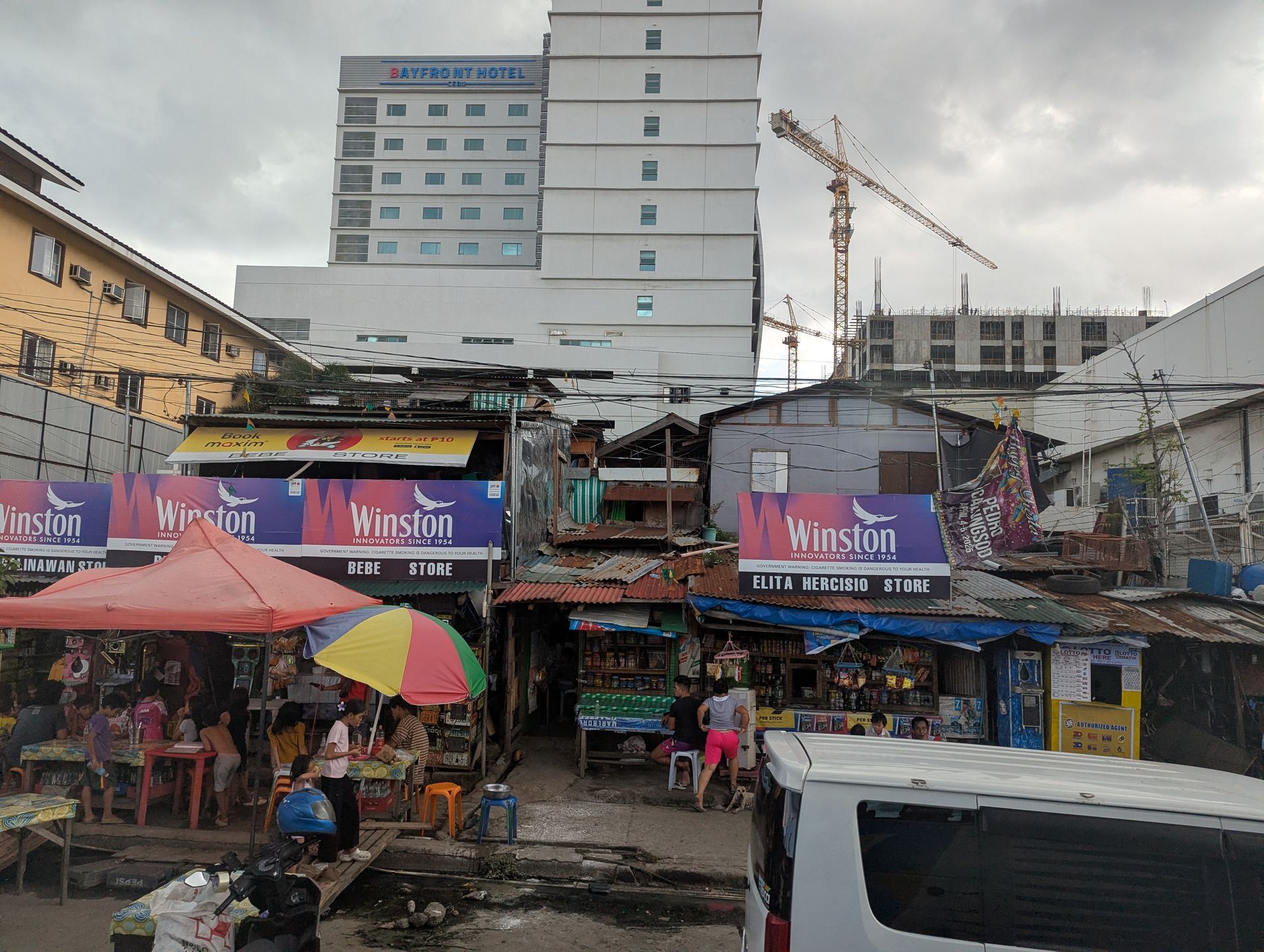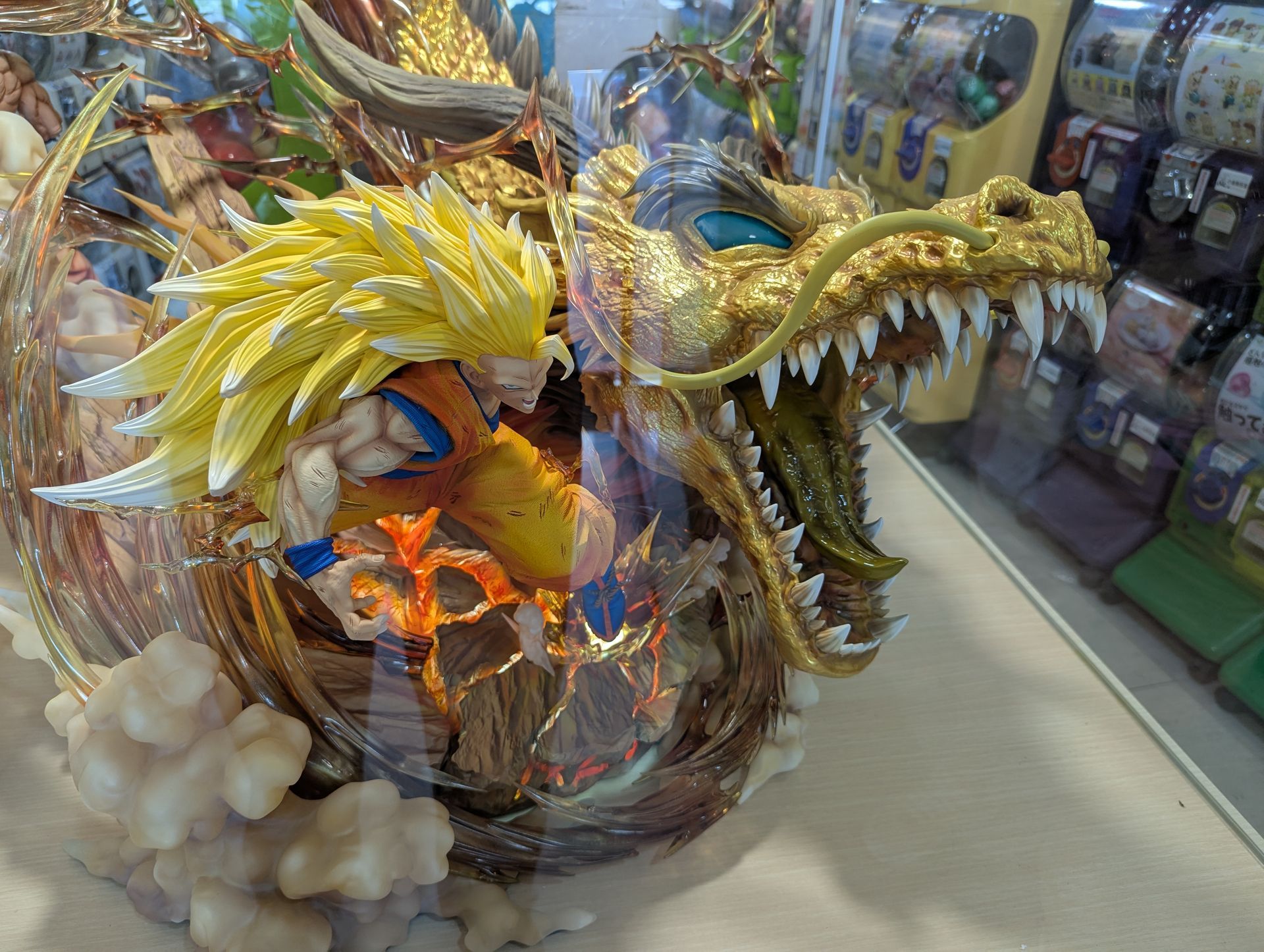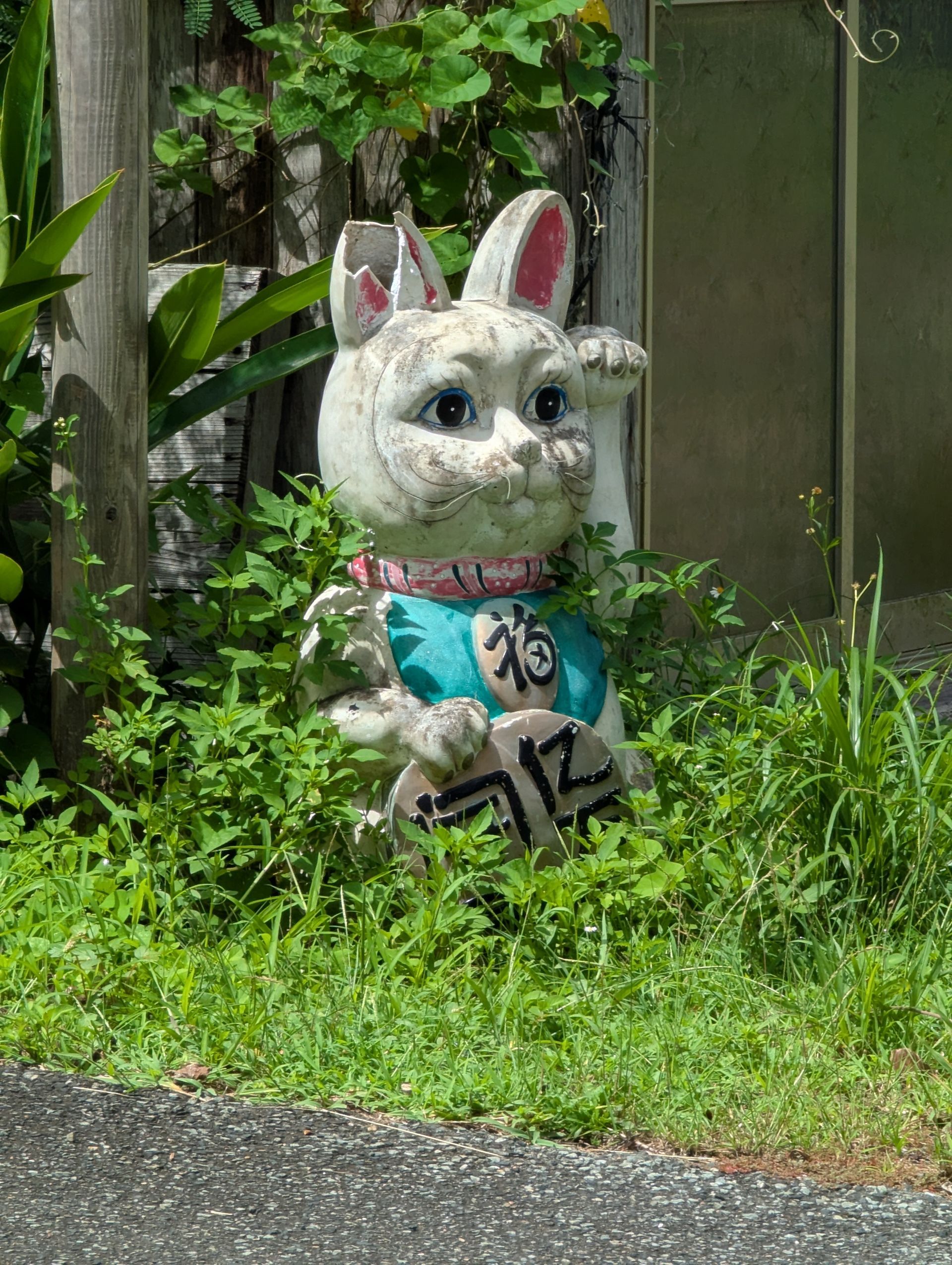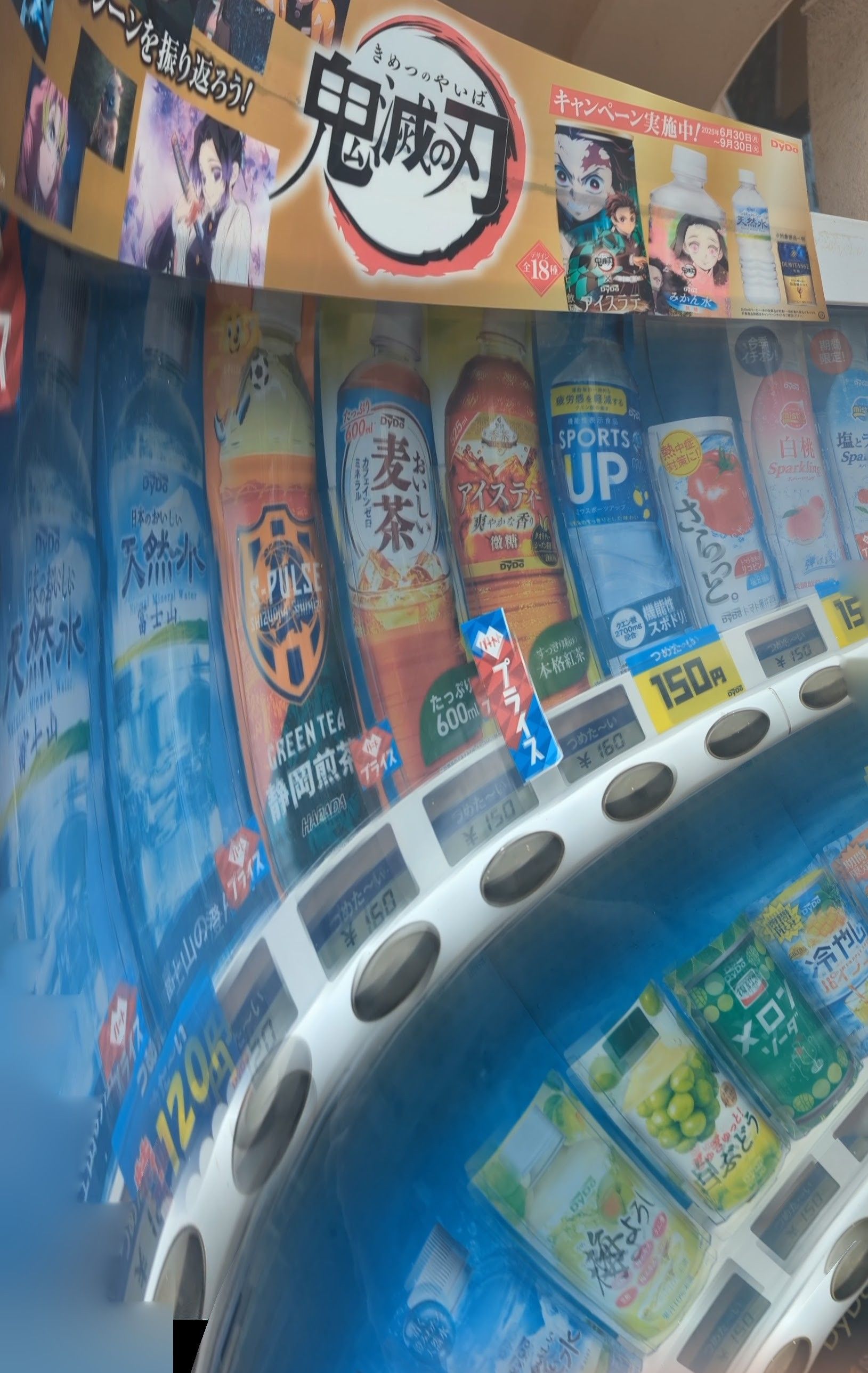Philippines, reflections
Boracay Island
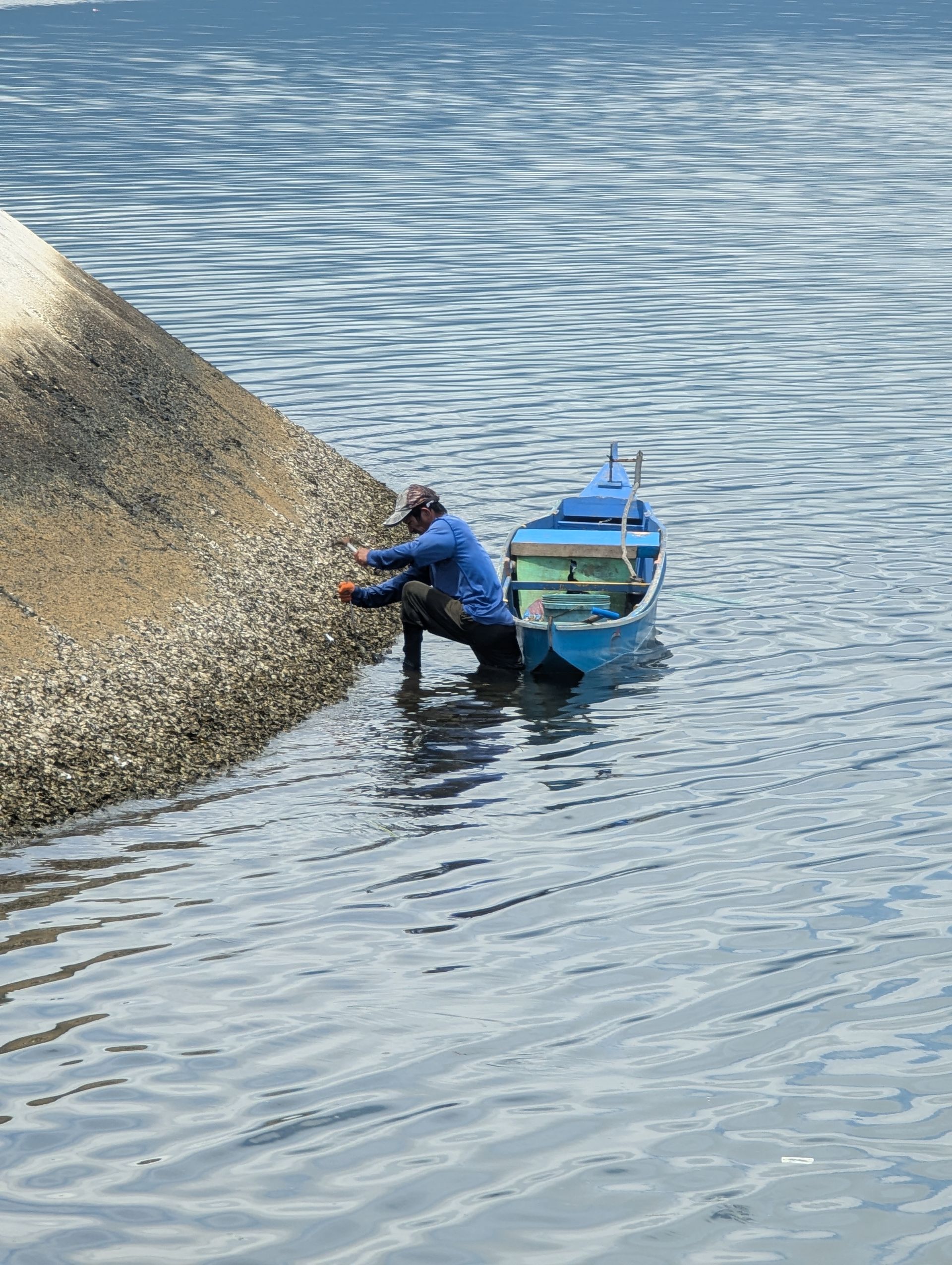
I walk along the edge of the harbor. A concrete breakwater slopes down to the water. Sitting in a narrow boat, a man is chipping oysters off it with a hammer and chisel, to sell at the bars along the waterfront in the evening. The distinctive brightly colored boats are everywhere, long and narrow with a sharp uplifted prow. They resemble water beetles when they are moving. Their outriggers touch off disturbance on the surface, like the spidery legs of the beetle as it scoots here and there. Occasionally you see a longer boat paddled by several people on either side with one person standing on the bow counting the rhythm. Viewed from the stern, as the boat reseeds, the paddles give the effect of heaving in and out like an animal breathing hard. It is a dragon boat.

This was the indigenous form of transportation. It has been modified over time with sails and now two stroke engines. This transformation can be seen everywhere, some boats more homemade than others; small, large, green, turquoise or light blue with an awning draped across the poles that used to hold sails and now protect from the hot sun. These are their fishing boats and for many, their homes. The waters are lively with fish. An inviting, dark green, densely curled border of mangroves makes a protective nursery for the fish along the coastlines. It also filters the water and buffers the impact of typhoons. Tourism has become the official activity. But fishing is survival for most of the people. Trying to walk outside of designated tourist areas, beaches, resorts, tours; invites an assault by men with taxis,‘tuk tuks’, and three wheeled trikes. Wherever you want to go, they will take you there. A very small boy came up to me silently, his hand extended, palm up, tiny fingers curled to form a cup for coins. Old women and men follow for blocks holding out trinkets to sell, muttering, supplicating. Anything free is being ingeniously used. Discarded plastic bottles are used to float the bamboo docks. The bottles have been gleaned from the waters and are held in reserve in plastic bags attached to the docks.
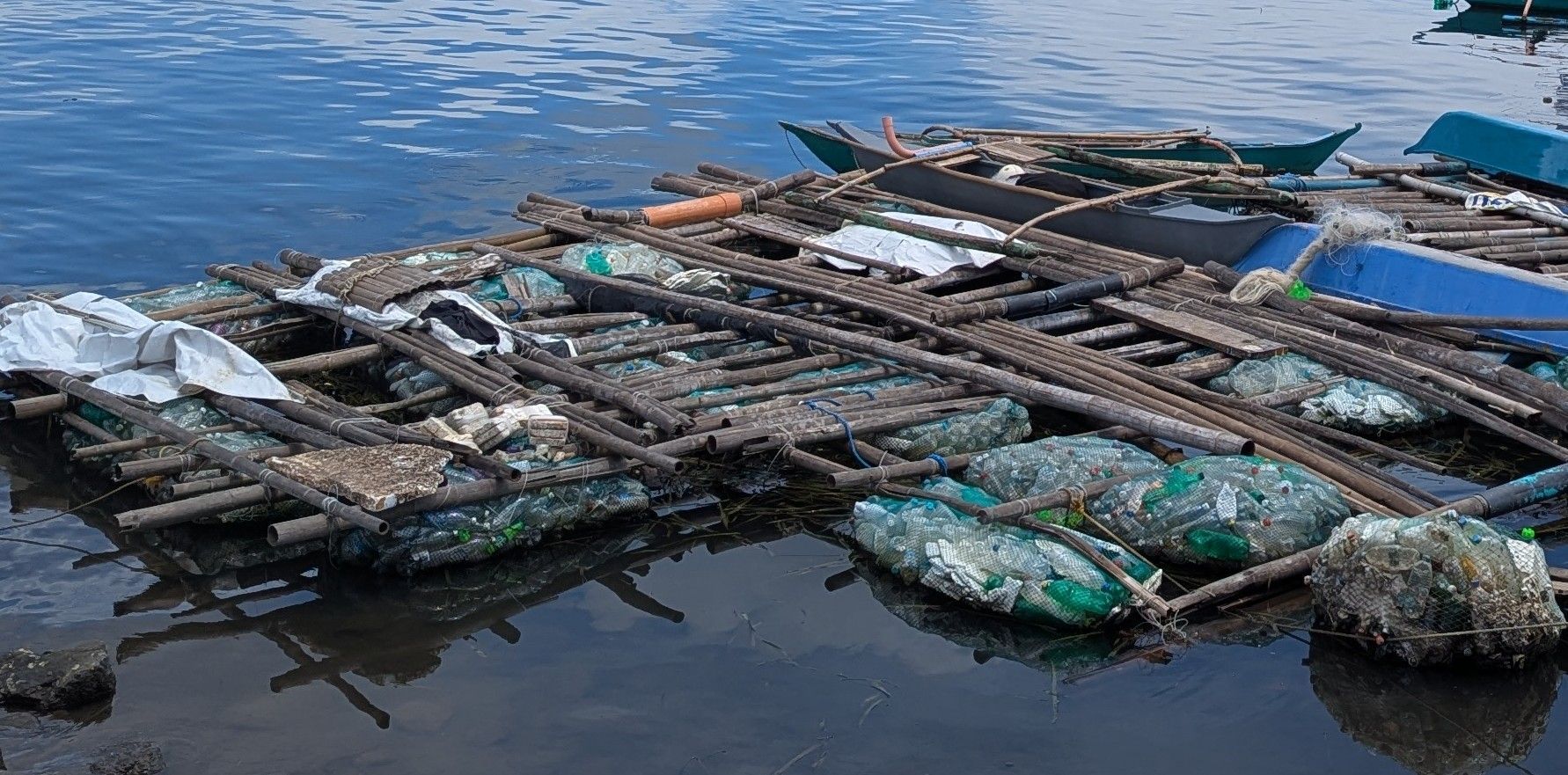
Nets of rocks make anchors and used tires attached to the breakwater are stairs to climb up from the boats. A little girl sits on the bow of her boat munching contentedly from a bag of chips, her dad is in the shadow of the awning, resting. It is mid-day and very hot. They watch me walk by. They are witnessing a change they have no control over. Their white sand beaches, scuba diving and snorkeling have brought tourism they could never have imagined. Resorts have come, the environment is transforming into something they don't recognize. Promenades are being built along the waterfront, cruise ships arrive with strange looking people. She and her father will try to fit in, try to survive.
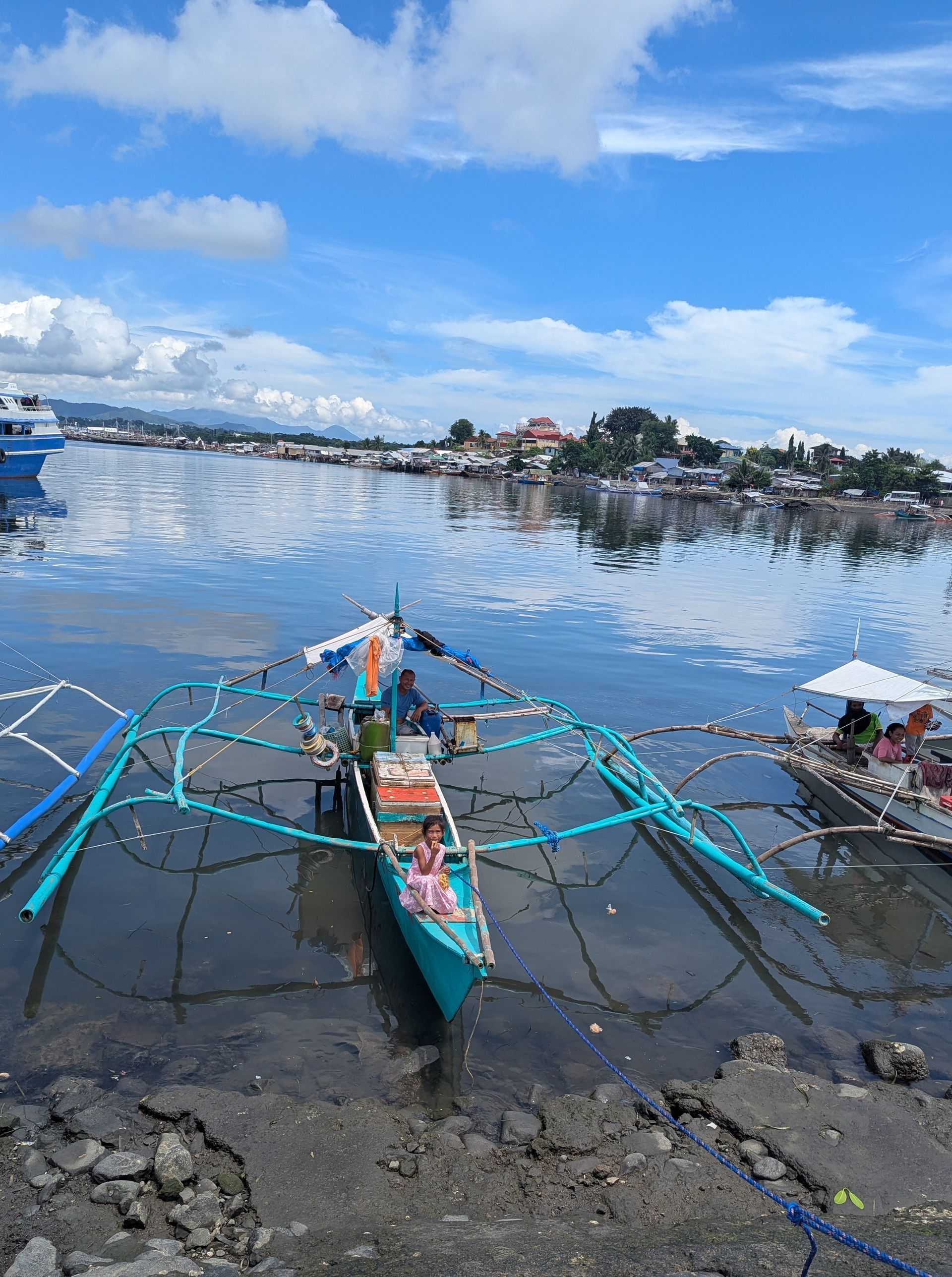
Two children emerge from the neighborhood of houseboats and shanties, a boy and a girl, in uniforms that indicate their parents can afford to send them to school. Other children form groups for like-minded play, all day. They are inventive. A ‘gun’ made of discarded soda cans and a plastic bottle produces a shot that can't be distinguished from the real thing. They understand about survival in a police state.
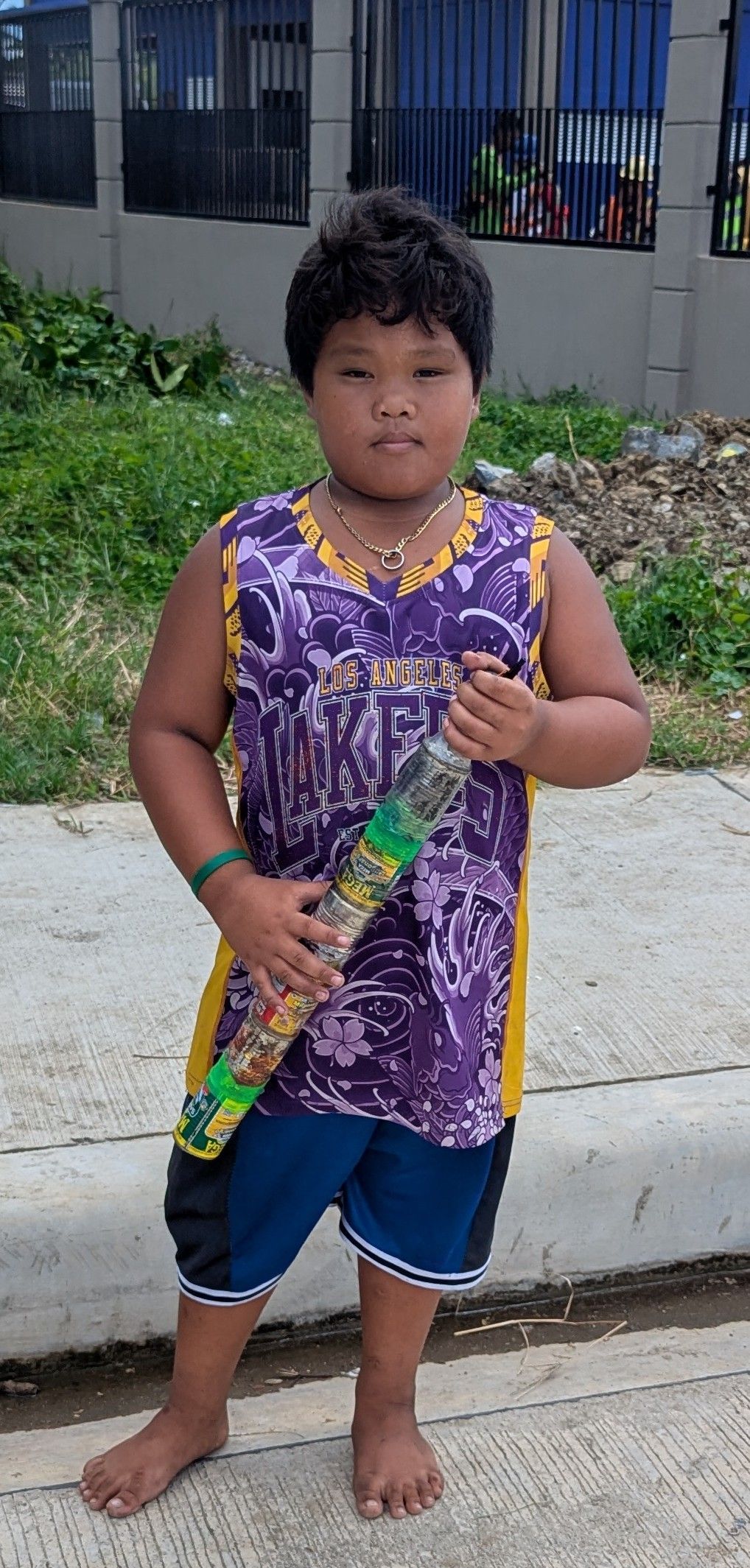
A little girl walks beside me for a while on her way to school, practicing some of her English on me, not begging. Imitating my use of a scarf as a cape to keep the sun off, she takes off her light jacket and does the same, flapping the sides like wings. As we part I realize I have a hair clip in my pocket that I had bought as a gift for my granddaughter; I hand it to her, she smiles and runs off.
